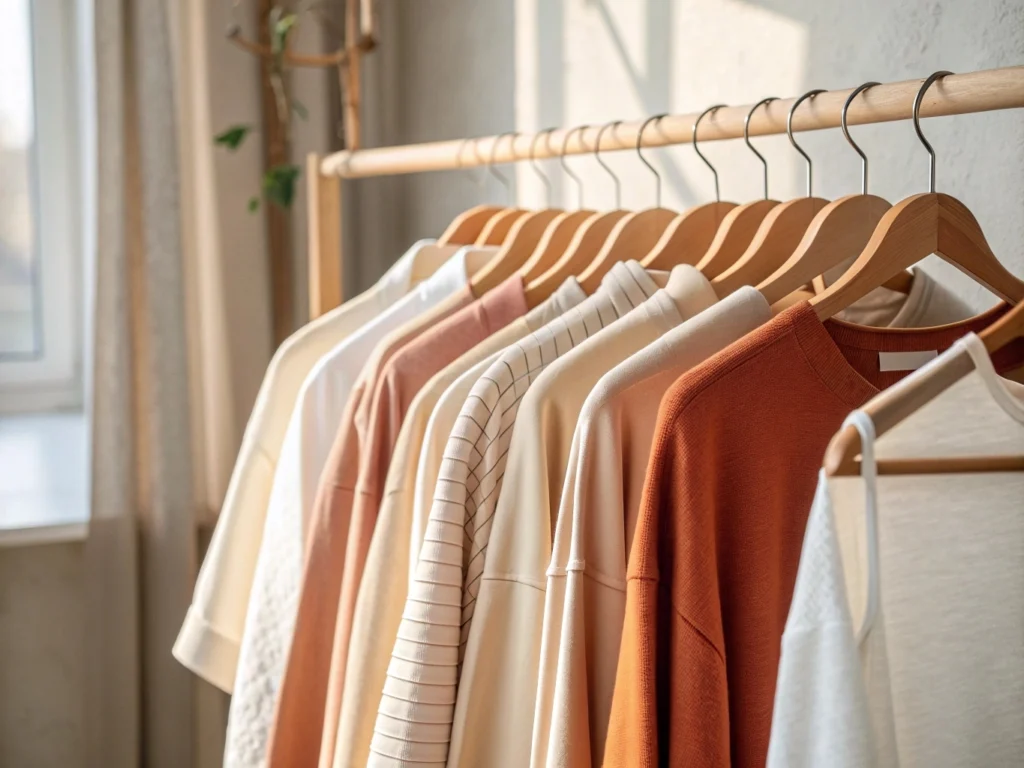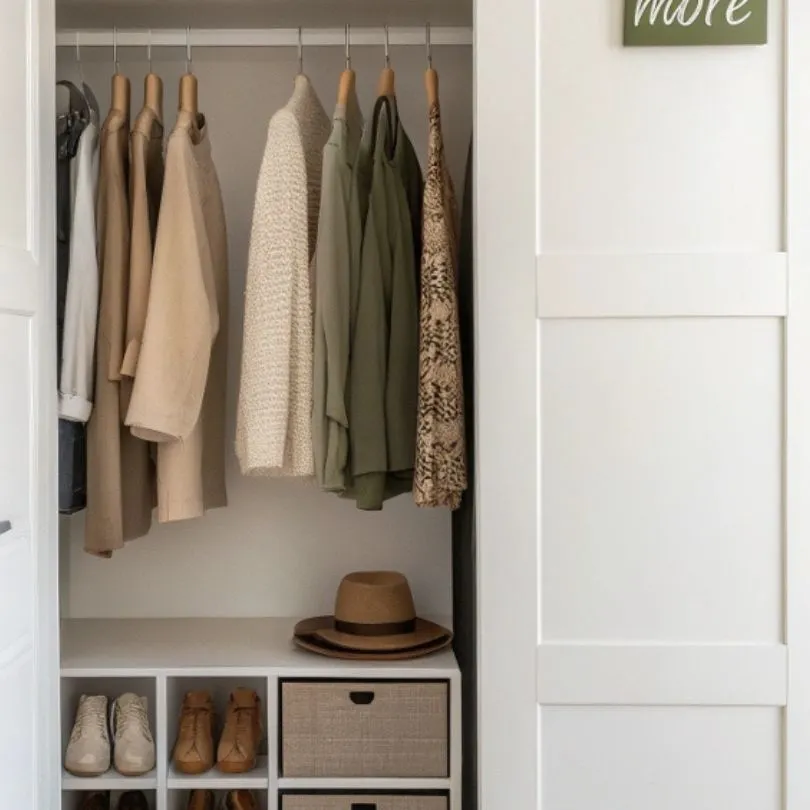I didn’t choose my closet for the space I chose it for the peace it brings into my daily life. As a minimalist, every clothing item I own has a purpose, a place, and a reason for being there. No overflowing hangers, no “just in case” outfits, and no guilt about unworn purchases. Designing my wardrobe this way has simplified my mornings, reduced decision fatigue, and made getting dressed a moment of calm instead of chaos.
1. Start With the End in Mind
Before I even looked at closet designs or storage solutions, I asked myself one key question: “What do I want my mornings to feel like?” For me, the answer was calm, simple, and intentional. That vision became my filter for every choice I made from the number of clothing items I kept to the type of storage I used. Instead of planning for maximum storage space, I planned for maximum ease and clarity.
2. Declutter Before You Design
Designing a minimalist closet starts long before you measure shelves or choose hangers it starts with LETTING GO . I went through every single clothing item I owned and asked: “Do I wear this often? Does it fit my lifestyle? Do I actually love it?” If the answer was no, it went into the donate pile. By the time I finished, I wasn’t just organizing clothes I was curating a collection that truly reflected me. This made the design phase so much easier because I was working with only what I truly wanted to keep.
3. Choose Function Over Fashion in Your Closet Design
It’s easy to get caught up in trendy closet systems or expensive storage solutions, but a minimalist approach flips the script. I focused on function first, simple shelving, durable hangers, and open space to let my clothes breathe. Instead of buying more organizers, I worked with what I already had and invested only in pieces that solved a real problem. This not only kept my space clutter-free, but it also saved me money in the long run, money I now put towards things that truly matter. (Learn the habits that help me save over $300 a month with less stress in my Minimalist Budget Habits guide)
4. Set Clear Boundaries for What Stays
Minimalism thrives on boundaries. For my closet, I decided in advance how much space each category of clothing would get one shelf for sweaters, a set number of hangers for dresses, a single drawer for workout clothes. These limits keep me from letting clutter creep back in. When the space is full, something has to go before something new comes in. This simple rule has kept my wardrobe lean, functional, and always aligned with my personal style.
5. Choose a Neutral Color Palette

One of the most stress reducing decisions I made when designing my closet was sticking to a neutral color palette shades like beige, white, gray, and soft earth tones. These colors mix and match effortlessly, meaning I spend less time deciding what to wear and more time starting my day with calm and clarity.
It’s the same principle I apply to my mornings: fewer distractions, more peace. In my Calm Morning Routine: A Gentle Start to Your Day , I explain how small, intentional choices like this set the tone for a stress free day.
6. Prioritize Comfort Over Trends
When choosing my closet items, I stopped chasing short lived fashion trends. Instead, I focused on fabrics, fits, and designs that feel good to wear all year round. Minimalism isn’t about having the least clothing possible, it’s about having the right clothing that serves you consistently.
7. Avoid Overbuying Accessories
It’s easy to fall into the trap of collecting belts, scarves, and jewelry you rarely use. These items often take up space without adding real value to your daily outfits. By cutting back, I not only cleared physical clutter but also freed up mental space.
This shift was part of a bigger mindset change that helped me save money and live more intentionally. In 10 Things I Stopped Buying After Embracing Minimalism, I share the other purchases I eliminated and how that decision transformed my budget and home.
8.Choose Multi-Functional Pieces
Instead of having separate clothing for every occasion, I now invest in pieces that can be styled in multiple ways. A simple black dress can work for both casual days and formal events, just by changing accessories. This approach keeps my wardrobe lean while giving me endless outfit possibilities.
9. Regularly Reassess Your Wardrobe
Minimalism isn’t a one time project it’s an ongoing process. Every season, I review my closet and ask: Does this still serve me? If the answer is no, I donate or repurpose the item. This habit ensures my closet stays functional, uncluttered, and aligned with my lifestyle.
Designing your closet the minimalist way isn’t about following strict rules it’s about creating a space that supports your life, reduces stress, and boosts your confidence every single morning. By choosing only what serves you, embracing quality over quantity, and letting go of the excess, you’re not just simplifying your wardrobe you’re simplifying your life.
If you’re ready to take the next step toward intentional living, start small, stay consistent, and let your closet be a daily reminder that less truly is more.
💡 Ready for more minimalist inspiration?
- Discover Gentle Morning Routines That Don’t Start With Your Phone to set the tone for calmer days.
- Learn the 6 Minimalist Habits That Changed My Life for a total life reset.

